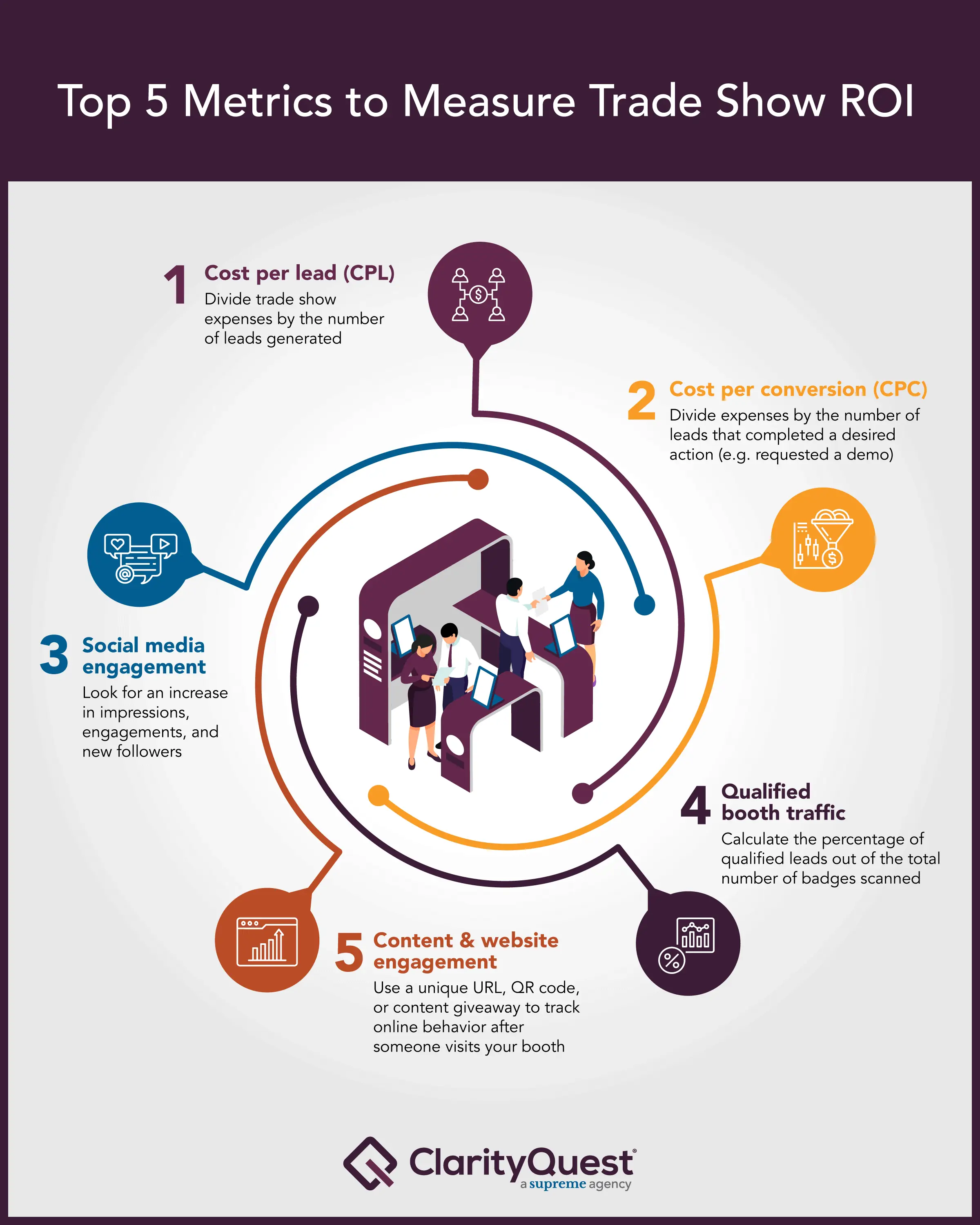It seems like the time between conference seasons gets shorter every year. This means marketing teams have little downtime to measure the return on investment (ROI) before heading to the next trade show.
For many of our healthcare software marketing clients, trade show booths and events represent the single most expensive marketing channel, often with the highest budget line item by at least double.
With such a significant investment, one would assume that marketers are reporting on event KPIs similar to the way they do for digital marketing. Unfortunately, that’s not always the case.
It’s often taken for granted that a company has to exhibit at ‘XYZ’ trade show simply because everyone else is doing it—not necessarily because it generates results.
Five best metrics to track your trade show ROI
Here are five metrics B2B marketers can use to measure the effectiveness of your trade show spend.
1. Cost per lead (CPL)
It’s likely your company’s primary reason for attending a trade show or event is to generate new leads. The number of leads is likely the first (and only) data point marketers report on in their event recap for sales and their leadership. To demonstrate marketing value, take it a step further and show your leadership the CPL.
You can calculate CPL by dividing all expenses associated with attending a trade show (including travel) by the number of leads generated.
This number will likely shock the C-suite and marketers alike, especially as compared to other marketing channels. One study estimated that the average CPL for trade shows is $811 and $1,442 on the higher end.
2. Cost per conversion (CPC)
While it’s great that you added XXX new contacts to your marketing database, the real question is how many of them converted. For this metric, define what the desired conversion is before you leave for your next event.
Our recommendation is to enroll new contacts in an email nurture sequence with the end goal of getting them to sign up for a webinar or request a demo.
To calculate this metric quickly, include the lead source when entering the new contacts into your CRM or marketing automation system. If you use a lead scoring model, ensure you’ve adequately assigned points for a trade show interaction, keeping in mind that a badge scan is not equivalent to someone who watched a product demo at your booth.
3. Social media engagement
Increases in social media impressions, engagements, and new followers before, during, and immediately following an event is indicative that your message was distributed and resonated with your audience.
There are a couple of ways to approach this metric, but what you’re looking for is how your social media metrics compare to an average month. Did you see a bump in the number of new followers, or was there a spike in the total number of engagements on LinkedIn? Also, how long do you think the trade show’s tail will be?
This data is one way to understand how you’re engaging with your target audience beyond the exhibit hall floor.
4. Qualified booth traffic
The larger the trade show, the more varied the attendees, which means only some people visiting your booth are qualified to buy your product or service.
The amount of qualified booth traffic is best reflected as a percentage of the overall number of badge scans and should be used to complement how you report CPL. This metric should factor into your ROI for attending a specific trade show or event.
After all, if only 3 out of every 100 people who visited your booth are qualified leads, maybe your marketing dollars would be better spent connecting with the three qualified ones than on a huge booth leading you to the 97 who aren’t your target audience.
It’s also worth tracking how many current customers and relevant media representatives visit your booth to understand the bigger picture and other potential opportunities to grow your brand.
5. Content and website engagement
One best practice for attending an event is to drive contacts to a unique landing page or piece of content, such as an exclusive download, for event attendees only. This metric is the easiest way for marketers to see how attendees engage with their brand outside the booth.
If you distribute printed collateral, use a trackable QR code so you can see how much traffic it generates. Similar to measuring social media, marketers should also look at their Google Analytics to see if there was a spike in website traffic around the event dates.
Lead with your marketing goals
When it comes to relationship building, nothing beats an authentic face-to-face conversation.
However, when it comes to trade show ROI, marketers need to be more proactive about tracking and monitoring their marketing efforts’ effectiveness, especially those tasked with aggressive lead generation goals.
If your trade show participation and event sponsorships are not helping you meet your marketing organization’s goals, you are wasting your budget at the expense of other marketing channels.
So, what’s a marketer to do?
Take these trade show ROI metrics to your leadership team for a frank discussion about marketing spend, whether effective or not. It might be worth a conversation about who is paying for trade show participation, and maybe sales or even customer service might need to share in the costs of your event marketing efforts.
Rest assured, having this data at your fingertips will be essential for next year’s budget and planning.



